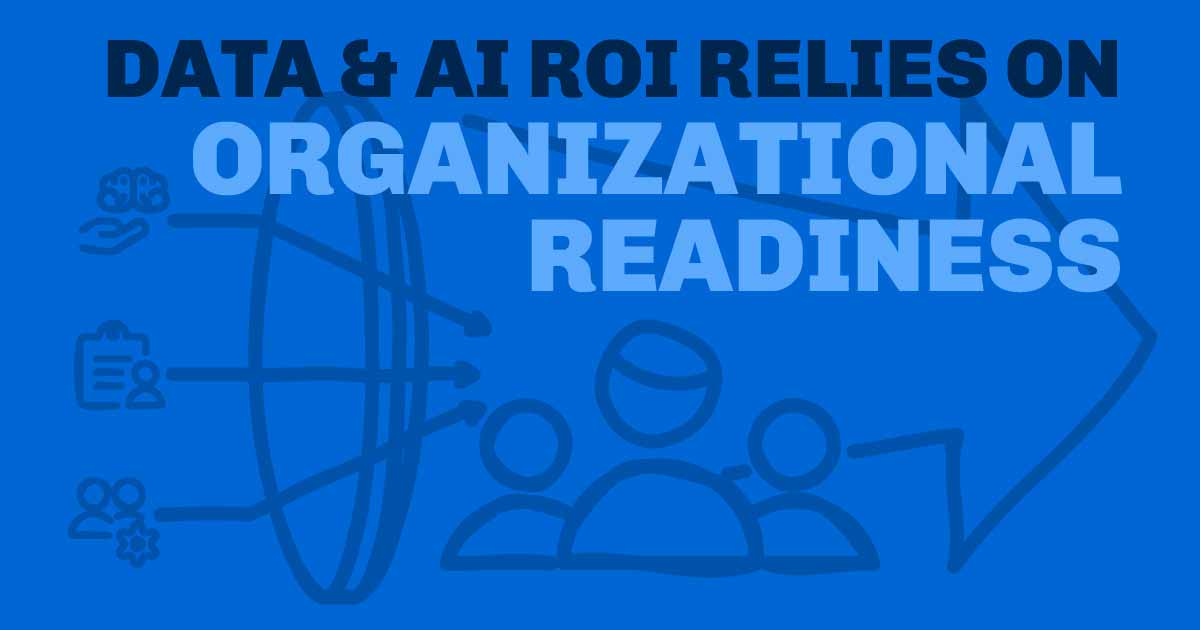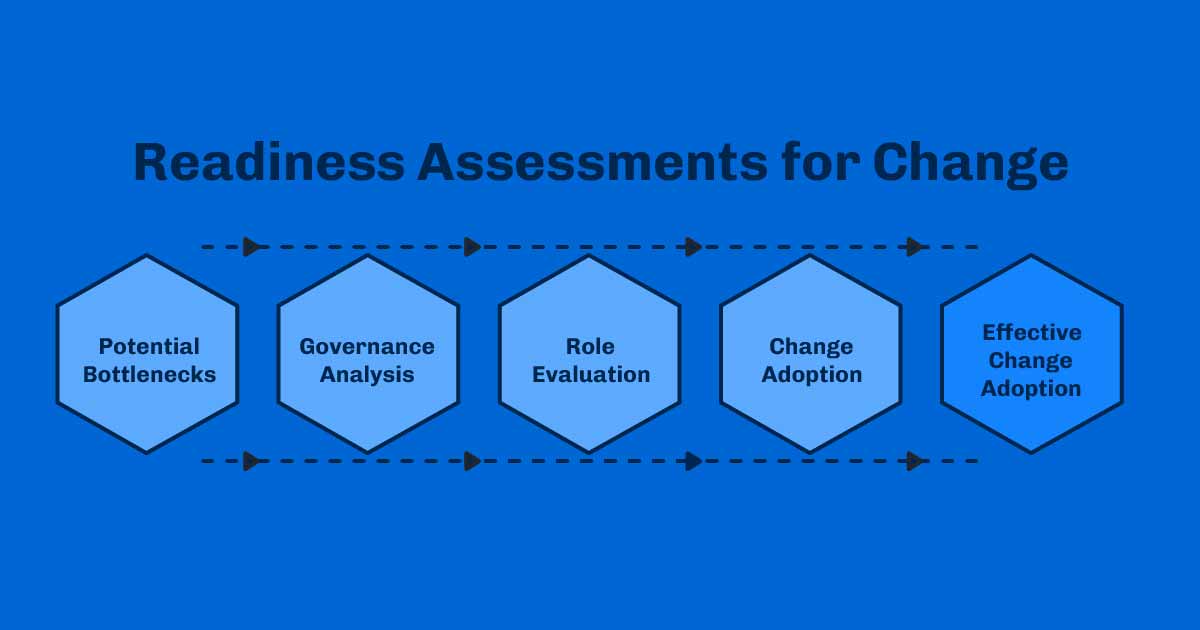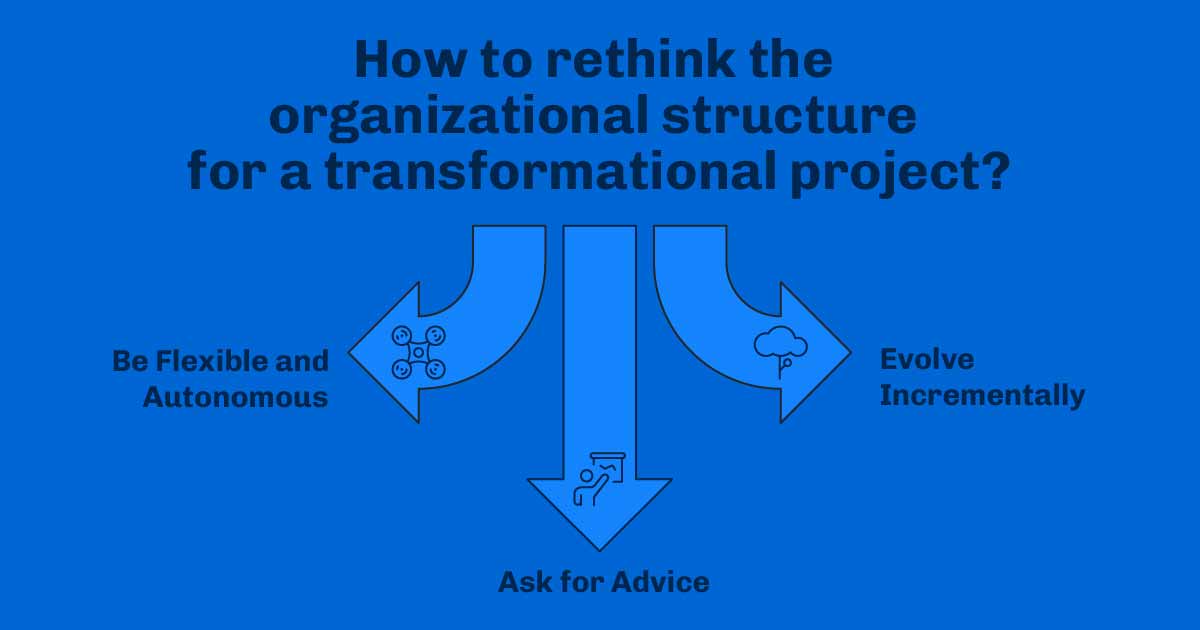
The consultants delivered, the system is live, and the confetti has settled. Fantastic! But here’s the million-dollar question: Is your organization actually ready to scale and realize that planned Return on Investment (ROI)?
A new system or data warehouse adds immense capability and is necessary for the data intelligence AI projects are built on. However, the critical and defining factor for true ROI is ensuring your team can master the new skills, responsibilities, and changes that come with it. Don't let a successful implementation become an organizational bottleneck!
So, what can you do to make your project the transformative success story you planned?

Before you greenlight a technical effort, you need to know what you’re up against. Organizational readiness is more than just a vague "culture check." You need quantifiable evidence to set realistic expectations for the timeline and budget. Whether it's a big transformational change or small one impacting a critical business area.
To truly assess your starting position, look at these operational areas:
How many business stakeholders are needed to approve a simple data field change, and how long does it take? If it's six signatures and two months for a minor adjustment, your new system's backlog will drown you. This tells you if your governance is already a bottleneck. Streamlining your approvals, preferably through the product management function, is a great way to remove unnecessary friction.
The market for skilled data and systems professionals is competitive. If it takes your HR team six months to fill a mid-level analyst role today, you need to budget a year (and maybe a recruiter) to hire the critical Product Manager or technical lead you'll need post-implementation.
Did the last tool your team implemented die a quiet death because nobody used it? Look at the hard usage metrics of the last three new systems. A low adoption rate is a flashing red signal that your change management muscle is weak. Consider training and advocacy options to succeed this time.
A data warehouse or AI implementation opens new technical opportunities and capabilities – it’s why you embarked on this journey. But is your organization ready for the functional and business changes that come with it? Will you need to implement new business processes to support this project? How will you communicate and plan the rollout and ongoing operations? Don’t overlook these conversations with key stakeholders and people involved in the change in process.
At Trility, we advise clients with readiness assessments that help determine potential bottlenecks in governance, impact to existing and new roles, and how change-ready the organization is with adopting new technology.

The cost of not preparing your organization is often far greater than the cost of the project itself. These aren't just theoretical risks; these are hard-dollar costs that destroy planned ROI.
You paid the consultants to leave, but you end up paying them to stay. Why? Because your internal team didn’t have enough time to absorb the knowledge, or you didn't hire the critical staff to support deeper, advanced skill sets supporting this new system. The result is an endless retainer that bleeds your operational budget dry.
Nothing burns out an already stressed team faster than a new system that piles on more responsibility without the proper staff or training. When your best people quit from burnout, they take the institutional knowledge of the old and the new system with them, leaving you to manage the fallout.
Your new data warehouse is pristine at go-live, but six months later, the business questions are uncovering source data quality issues. If you didn't staff a team empowered to address and prioritize these issues (i.e., a Product Management function), those data flaws will accumulate, eroding trust in the new system until its value hits zero.

The hallmark of a successful technology implementation is that everyone wants in! You'll see new dashboards elevating business questions and uncovering source data quality issues. Stakeholders will flood you with feedback on application usability. These are great problems to have, but they will grind progress to a halt if not managed.
To keep the flow and evolution going, you need product management:
Product management is NOT a part-time gig. It's a full-time-plus job managing stakeholders, capturing, prioritizing, and planning. The Executive level needs to empower this person (or team) to make decisions and focus on this CRITICAL function.
Provide continuous training and support. Creating an environment of continuous learning helps these Product professionals master their craft, carves out career paths, and encourages the retention of these vital "rock stars".
Ditch the "1(a), 1(b), 1(c)" priority list – which really is 1, 2, 3. This mindset kills good product and delivery management. Sticking to a true #1 priority feels challenging in the short term, but focus keeps your project on the rails, reducing friction (and time to delivery!).

Implementing new capabilities opens doors, but here's a painful truth: don't simply pile new responsibilities onto existing team members. If your team was overworked before the project, the new implementation could absolutely bury them, guaranteeing a failure post-go-live.
To ensure your organization scales gracefully:
Appropriate training and a proper handoff are critical for embracing this new world. At Trility, we believe in doing this transition with you, not to you. When the project wraps up, we leverage a structured plan, starting 90 days before the engagement's end, to train your existing team for a smooth handoff.
Sometimes, you need not only more help but different or deeper skill sets than you can train up your team in a short period of time. Trility teams are able to train and pair with existing team members and also can help with assessing skills needed after the engagement ends. We can advise on potential job descriptions for recruiting these key new team members you might need to add to your existing team to ensure future success.
When budgeting for a project, it is critical to analyze potential roles and their associated costs early. You don't want to be scrambling for dollars to hire critical staff right when the consulting team departs. And hey, let your team weigh in on where they can upskill and where they genuinely need help.

Your organizational structure is a living, breathing entity. If you implement a transformational project, trying to use the same old structure will feel like jamming a round peg in a square hole. The transformation isn't just for your technology – it’s for the people and the organization living it.
Be flexible about what comes next. If building out a separate, autonomous team is what it takes to get faster feedback from the business, then do it. Unnecessary organizational friction is a miserable byproduct of "we've always done it this way".
The way the team was structured during the project might not be the right structure six months from now. Allow for incremental, "agile" changes to team and organization structures. You will know much more about what you need and how things should run a year from now than you did at the project kickoff.
Our Delivery Consultants at Trility have seen it all across different organizations and industries. We can partner with your leadership to offer recommendations for organizational and team structures as well as growth that supports achieving the ROI you’ve dreamed of.
The system is only as successful as the organization running it. Don't let governance friction, skill gaps, or change resistance turn your successful implementation into a costly, perpetual consultancy retainer. Trility’s Advisory Services, featuring our AI Strategy & Readiness Advisory offering, provides the strategic foresight you need. We partner with C-suite and senior leadership to quantify your true organizational readiness and build the business-driven roadmap that guarantees maximum ROI and a true transformation of your company.